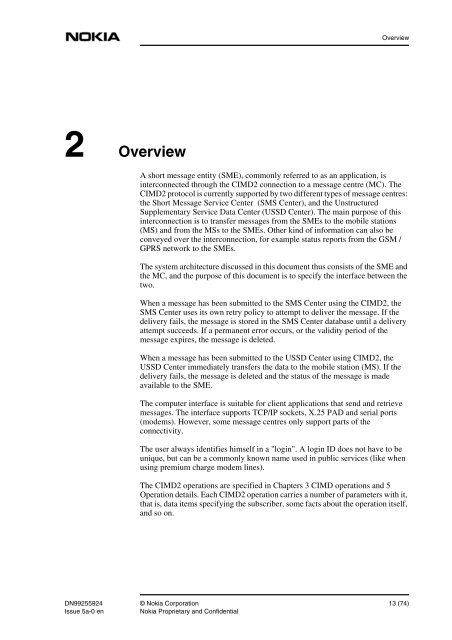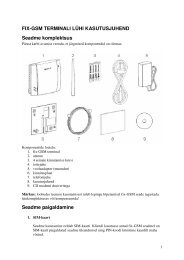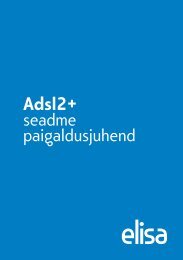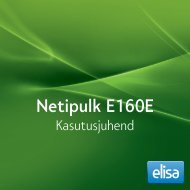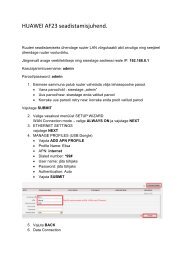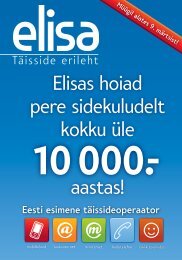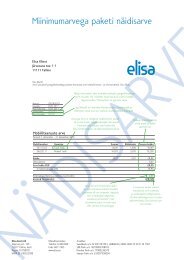CIMD Interface Specification - Elisa
CIMD Interface Specification - Elisa
CIMD Interface Specification - Elisa
You also want an ePaper? Increase the reach of your titles
YUMPU automatically turns print PDFs into web optimized ePapers that Google loves.
2 Overview<br />
Overview<br />
A short message entity (SME), commonly referred to as an application, is<br />
interconnected through the <strong>CIMD</strong>2 connection to a message centre (MC). The<br />
<strong>CIMD</strong>2 protocol is currently supported by two different types of message centres:<br />
the Short Message Service Center (SMS Center), and the Unstructured<br />
Supplementary Service Data Center (USSD Center). The main purpose of this<br />
interconnection is to transfer messages from the SMEs to the mobile stations<br />
(MS) and from the MSs to the SMEs. Other kind of information can also be<br />
conveyed over the interconnection, for example status reports from the GSM /<br />
GPRS network to the SMEs.<br />
The system architecture discussed in this document thus consists of the SME and<br />
the MC, and the purpose of this document is to specify the interface between the<br />
two.<br />
When a message has been submitted to the SMS Center using the <strong>CIMD</strong>2, the<br />
SMS Center uses its own retry policy to attempt to deliver the message. If the<br />
delivery fails, the message is stored in the SMS Center database until a delivery<br />
attempt succeeds. If a permanent error occurs, or the validity period of the<br />
message expires, the message is deleted.<br />
When a message has been submitted to the USSD Center using <strong>CIMD</strong>2, the<br />
USSD Center immediately transfers the data to the mobile station (MS). If the<br />
delivery fails, the message is deleted and the status of the message is made<br />
available to the SME.<br />
The computer interface is suitable for client applications that send and retrieve<br />
messages. The interface supports TCP/IP sockets, X.25 PAD and serial ports<br />
(modems). However, some message centres only support parts of the<br />
connectivity.<br />
The user always identifies himself in a "login". A login ID does not have to be<br />
unique, but can be a commonly known name used in public services (like when<br />
using premium charge modem lines).<br />
The <strong>CIMD</strong>2 operations are specified in Chapters 3 <strong>CIMD</strong> operations and 5<br />
Operation details. Each <strong>CIMD</strong>2 operation carries a number of parameters with it,<br />
that is, data items specifying the subscriber, some facts about the operation itself,<br />
and so on.<br />
DN99255924 © Nokia Corporation 13 (74)<br />
Issue 5a-0 en Nokia Proprietary and Confidential


